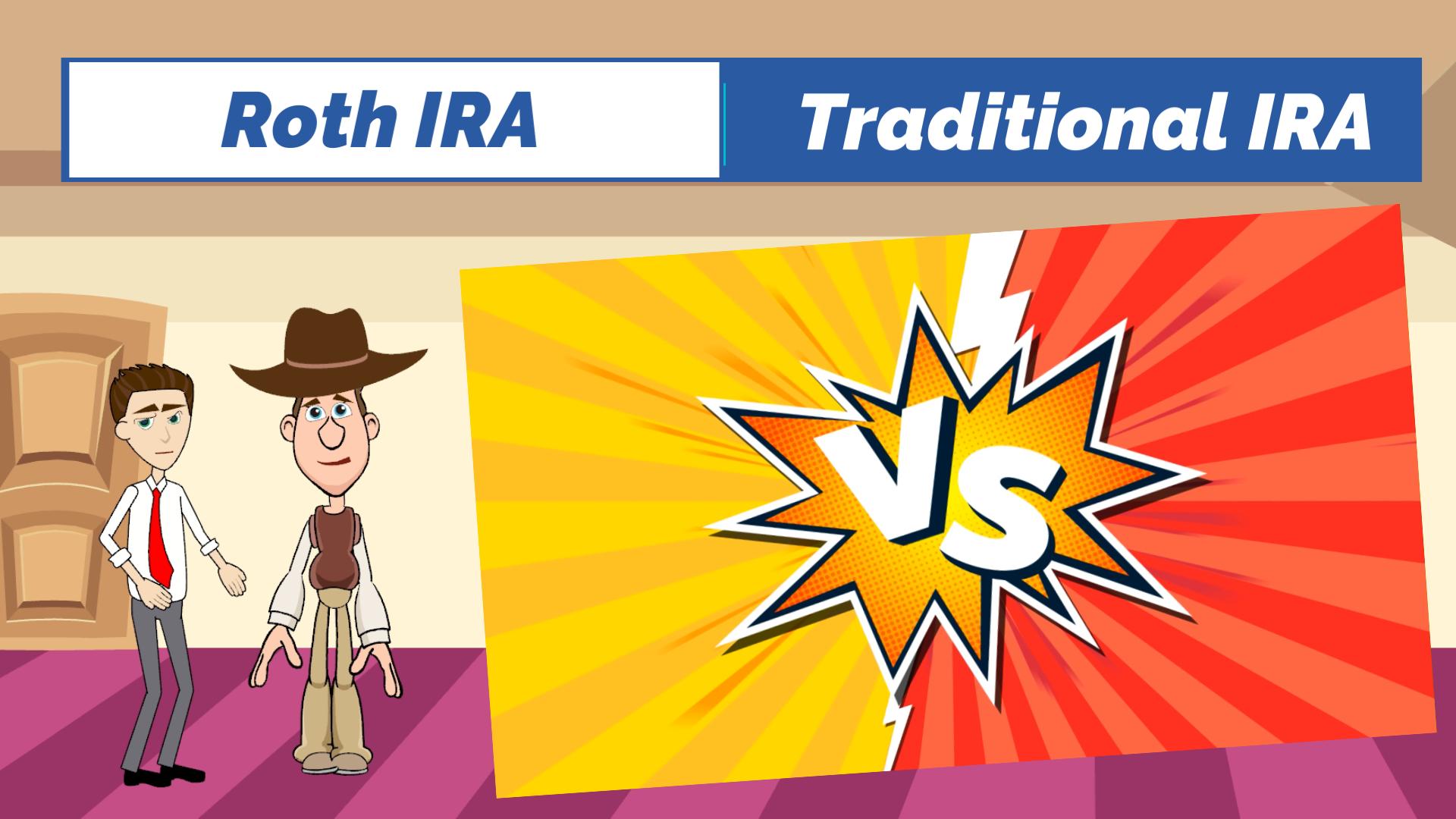A Roth IRA vs Traditional IRA Comparison for Kids and Teens
This video performs a Roth IRA vs Traditional IRA comparison in a simple, concise way for kids and beginners. It could be used by kids & teens to learn about Roth IRAs and Traditional IRAs, or used as a money & personal finance resource by parents and teachers as part of a Financial Literacy course or K-12 curriculum.

Suitable for students from grade levels:
- Elementary School
- Middle School
- High School
The topics covered are:
- What is a Roth IRA
- What is a traditional IRA
- Roth IRA vs Traditional IRA: What are some important differences
- Roth vs Traditional IRA: When should you use each
What is a Roth IRA?

A Roth IRA is a type of tax-advantaged individual retirement account (IRA) that you fund with money you have already paid taxes on.
This means you don’t get a tax deduction for your contributions, but your money grows tax free and you can withdraw your money – including all the earnings – completely tax-free in retirement.
What is a traditional IRA?
A Traditional IRA is a type of tax-advantaged retirement account that you typically fund with pre-tax money.
This allows you to deduct contributions from your income, lowering your income tax for that year.
The earnings grow tax deferred, and you have to pay tax on the money you withdraw in retirement.
Roth IRA vs Traditional IRA: What are some important differences?
The biggest difference is taxation: with a Roth IRA, you pay taxes on contributions but not withdrawals. The opposite is true for a traditional IRA: you don’t pay taxes on contributions but pay at the time of withdrawing.
Another important difference is Required Minimum Distributions or RMDs. RMD is the money you must withdraw from the account every year after you turn 73.
Traditional IRAs have RMDs, but Roth IRAs don’t. This also means that if you don’t need the money in retirement, Roth IRA becomes a great estate planning tool as you can simply pass it on to your heirs as a tax-free inheritance.

In addition, the eligibility for the two is slightly different. Although both require you to have earned income, there are income limits for contributing to a Roth IRA.
While traditional IRA has no income limit to the contributions, it’s important to note that the amount of traditional IRA contributions you can deduct decreases if you or your spouse have a workplace retirement account (like a 401k).
Lastly, the withdrawal rules for the two are slightly different. Because you fund a Roth IRA with post-tax money, you can withdraw your original contributions at any time, tax and penalty free.
This is not the case with a traditional IRA, as all withdrawals are taxed.
However, withdrawal of earnings from Roth IRA as well as any withdrawal from traditional IRA before age 59 ½ incur early withdrawal penalty.
Roth vs Traditional IRA: When should I use each?
A Roth IRA is an ideal choice if:
- You are young and just starting your career, and are more likely to be in a lower tax bracket now than when you’ll retire
- You plan to leave an inheritance to heirs or want flexibility in withdrawals
- You are able to invest in a 401k or other employer-sponsored retirement account, or
- You might need to withdraw money for emergencies
A traditional IRA is a good choice if:
- You are further into your career and are likely in a higher tax bracket than when you’ll retire
- You don’t have access to employer-sponsored retirement accounts
- You’ll need the income in retirement and are fine taking RMDs, or
- You earn more than the income limit of a Roth IRA
Download Transcript: Ideal for Use by Teachers in their Lesson Plan to Teach Kids & Teens

